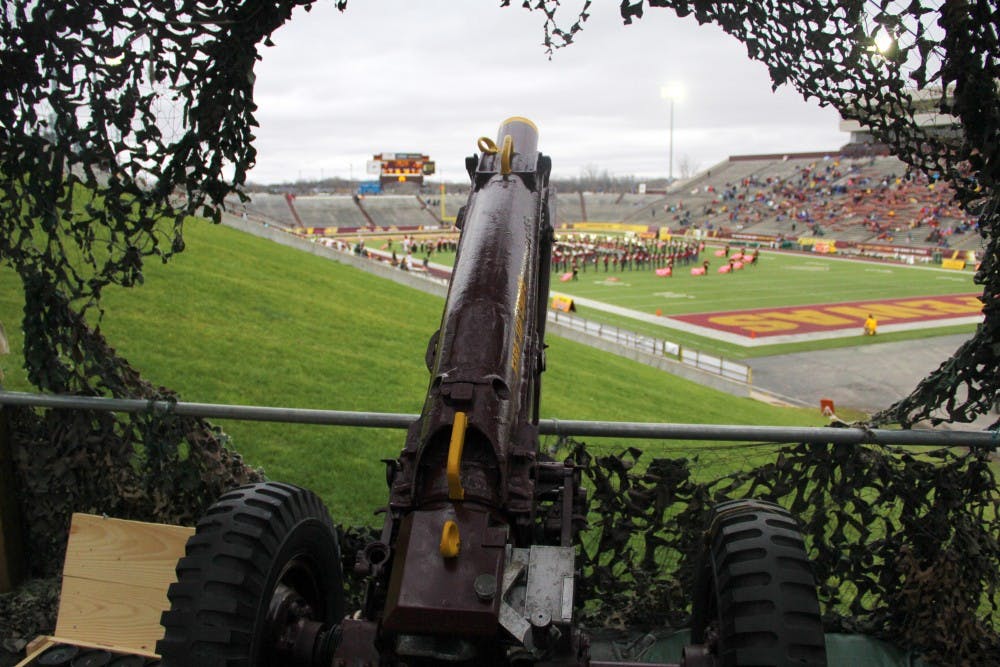Cannon Club supports football team while practicing artillery

The canon sits at the top of the hill located on the ____ side of the stadium during halftime of the Chippewas' game against Eastern Michigan University on Nov. 27, 2015. The canon is fired every time a touch down is scored.
The booming sound of a canon firing is heard after each touchdown is scored at every Central Michigan home football game.
Members of the Redleg Cannon Club are behind the scenes, firing the cannon from a bunker on the sidelines.
“We’ve had Cannon Club since the early 50s. But it wasn’t until ‘96 when we actually got a real cannon," said Cadet Joseph Hymel. “We’re training on the M1-16 75 millimeter Pack Howitzer.”
The ROTC club teaches the fundamentals of field artillery while supporting the football team during home games.
The cannon itself has a lot of history behind it, explained Hymel.
“It’s the only 75 millimeter cannon working inside the state for ROTC events," he said. "It was originally made in 1928 and served from World War II all the way up to Vietnam. (It) is currently serving as a ceremonial piece in Arlington National Cemetery for ceremonial reasons.”
The cannon used at the football games was gifted to the ROTC program in 1996.
"The cannon that we have now is called 'Genny’s Own,' Hymel said. "It is named after one of the secretaries that worked in the ROTC department.”
Before every game, Cannon Club quickly prepares to have everything ready in time for kickoff.
“We meet at Finch Fieldhouse, our headquarters, and we get cleaning supplies, personal protective equipment, ammunition, pieces of the cannon, all that stuff," Rose said.
The club is required to load the cannon in a government vehicle labeled "explosives" to transport it to Kelly/Shorts Stadium.
Members of the Cannon Club pride themselves on being able to teach new members quickly on how to operate the cannon.
"When we train people on the cannon we give them the adapter minus the shot gun shell blank, so that way we can go through all the motions of firing the cannon without actually firing the cannon,” said Cadet Cameron Bruneau.
“It’s a big gun but it’s really simple. That’s the beauty of it; really anybody can learn how to do it," Bruneau said.
Bruneau stressed the importance of communication when firing the cannon.
“If you don’t communicate well then you won’t get the cannon loaded in time," he said. "That’s something that people who generally join the ROTC and people in military science have no problem with.”
The Cadet said when the football season isn't in session the club still practices artillery training.
Bruneau said when the football season is over they go to Camp Grayling and focus on more artillery training, including fire simulator training.
The Cannon Club is available only to those in the ROTC program, but this may change in the future.
“We’re in the midst of maybe changing that, however right now it’s only open to ROTC people, to people in military science classes,” Hymel said.
Bruneau said when he first came to CMU he hadn't heard of the cannon tradition.
“I was really excited because it is a CMU tradition and I think it’s a really important one, (and) motivation to stay in the club,” Bruneau said.



